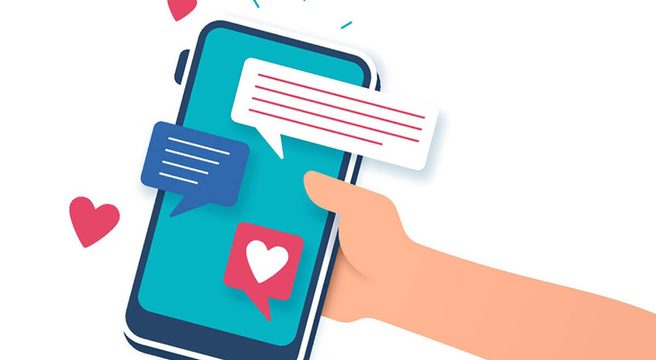 Your online content needs to stand out from the crowd. Although today the UK population consumes more content online than ever before, their attention span is at an all-time low, so your first instinct may be to put out something eye-catching and attention-grabbing. But this doesn’t always have a positive effect on consumers. Experience shows that setting yourself apart from your competition whilst also resonating with your audience, through authenticity and personalised experiences, will develop the bond of trust that your audience is seeking. Not only that but developing a genuine dialogue with consumers can set you apart from your competition.
Your online content needs to stand out from the crowd. Although today the UK population consumes more content online than ever before, their attention span is at an all-time low, so your first instinct may be to put out something eye-catching and attention-grabbing. But this doesn’t always have a positive effect on consumers. Experience shows that setting yourself apart from your competition whilst also resonating with your audience, through authenticity and personalised experiences, will develop the bond of trust that your audience is seeking. Not only that but developing a genuine dialogue with consumers can set you apart from your competition.
Assets vs. Demographics
Personalised content consists of assets – written, images or video – that is created specifically for a target demographic. An example of this would be if you see advertisements on your social media streams noted as “promoted” or “sponsored”. These are targeted adverts based on your demographics, such as age and gender, and likes and dislikes, which are cleverly interpreted and then curated into personalised content in an attempt to make you buy into a specific product or service. Another benefit to personalised content is that most consumers now expect this personalised experience and find generic targeting a turnoff.
Define Your Audience
Do you know who your audience is? Who are you trying to reach out to? Firstly you need to define and understand what your audience needs. You can achieve this by finding out where your audience is most likely to consume their information – is this on Facebook? Twitter? Perhaps even via comments or forums on your website? A simple way to look at how your customers consume information is to conduct market research, and both Twitter and Facebook offer integrated polls which makes this a quick and simple process. You can also look at both where and how your customers interact with your competitors, and by observing their comments and engagement online. Another trick is to utilise Twitter and Facebook analytics to gauge what your audience is talking about in general.
Mind Your Language
Once you’ve defined your audience it’s time to craft personalised messages that engage your customers and entice them to take part in a call to action. The language which you use can be just as important as the message itself. Steer clear of corporate jargon which is difficult for the audience to understand by using a natural and conversational tone of voice that’s easy to read and that will give better engagement. Plus using language that includes “We” and “I” often lets your audience know there are real people behind the brand. Additionally, once you have your demographics defined you can create and optimise content based on keywords and phrases that your audience often use or search for.
Human-centred Content
The phrase human-centred content is relatively new but it’s a hot topic surrounding online content marketing. It means looking at your ideal audience and identifying topics they enjoy and influencers that they aspire to. It also includes being aware of values, beliefs and interests that your clients hold and responding accordingly. Personalising your content involves serving individuals and not crowds. Including behind the scenes information such as celebrations e.g. office birthdays or work anniversaries plus showing real faces, for example, photos or video of projects as they are happening emphasises a human-centred approach. Consumers respond to emotions and feelings rather than reasoning. Making consumers feel happy, valued and excited about a brand are the top reasons why they’re more likely to repurchase. And usefulness and providing experiences were topped as the most popular reasons for having an established brand-consumer relationship.
Personalising your online content within both your marketing and social channels will create a human-centred approach. Make sure to speak your audience’s language, generate content that your audience values and optimise your content for each social channel for a successful online content plan.
[bctt tweet=”Find and define your audience and create content to boost your brand.” username=”yellbusiness”]





